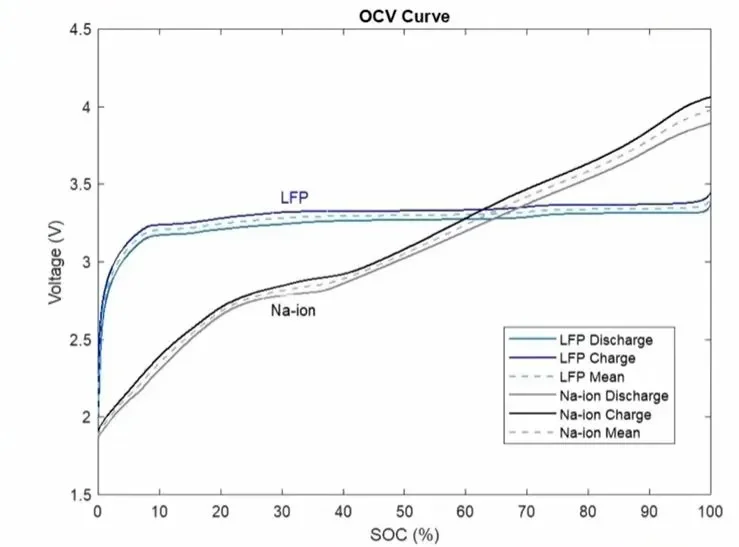Should You Use Sodium-Ion Batteries For Residential Off-Grid Solar?
If you’re in the market for solar batteries, you may have heard of sodium-ion batteries, a relatively new chemistry that sounds promising: Lower cost, decent performance, non-toxic, and easy to recycle.
So, why isn’t everyone switching already?
Let’s talk discharge curves
Sodium-ion battery chemistry is an electrical engineering nightmare.
Equipment connected to batteries (e.g., inverters) must accept the pack’s output voltage range. It’s much easier and cheaper to design and build equipment for batteries with a narrow output voltage range. The products are more cost-effective, smaller, and lighter.
A broader discharge range requires more complex technology. The equipment, in turn, is more expensive while the efficiency drops. So, what determines that range? It’s the battery chemistry.
Lithium iron phosphate (LFP) cells have a flat discharge curve. The useful range of a cell falls between 3 and 3.5V, with most of the discharging occurring at 3.2 to 3.3V. Since the difference between the lowest and highest voltage from a battery pack is small, equipment using this chemistry is the most cost-effective and efficient.
Meanwhile, lithium cobalt chemistry has a voltage range of 3 to 4.2V per cell. Product builders must design equipment to accept this wider spread. The resulting solutions are less efficient but still economically feasible, mostly because the chemistry’s high energy density offsets the drop in efficiency.
However, sodium-ion chemistry is a different story. These cells have a discharge range of 1 to 4.5V. Currently, there’s no supply or market for equipment that can serve this range cost-effectively.
While building a solution is possible, the size, weight, cost, and reliability penalties of supporting such a wide voltage range will cancel the economic benefits of sodium-ion chemistry — even if we achieved the economies of scale (and we’re a long way away).
“But there are sodium-ion batteries on the market. How do they work?”
To make sodium-ion batteries somewhat compatible with existing technologies, some engineers artificially limit the discharge range. However, this workaround leaves substantial storage capacity on the table. The drop in efficiency quickly gets to the point where lithium chemistries become a better option.
The bottom line
Efficient adoption of sodium-ion batteries requires a wholesale redesign of the supporting equipment (e.g., inverters), which is typically designed for established chemistries (e.g., lead-acid, lithium cobalt, and LFP) and is fundamentally incompatible with the behaviors of sodium-ion cells.
Can we tap into the full potential of sodium-ion batteries if a client is hellbent on doing so? Our software technology can do that, narrowing the output voltage range so that the packs are compatible with existing equipment. Practically, however, all the benefits you see “on paper” will be wiped out, and then some, by the high cost of such military-grade advanced battery voodoo.
Residential off-grid solar installations don’t have the scale to justify the development of a technology that will allow the cost-efficient use of sodium-ion batteries in the foreseeable future. LFP is still your best bet — just don’t fall prey to the false economy of cheap lithium batteries.

